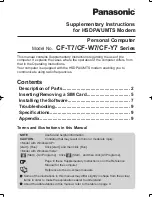
2-1
2
Site Considerations
As you prepare the site, you need to consider:
•
Stage II Vapor Recovery system
•
Submersible pump compatibility
•
Piping runs
•
Manifolded product lines
Stage II Vapor Recovery
If there is a Stage II Vapor Recovery system installed that includes a device in the pressurized piping, such as a Healy
Mini-Jet
™
,
see “WPLLD Installation with Stage II Vapor Recovery Systems” on page 4-14 for installation guidelines.
Submersible Pumps (STPs)
For proper WPLLD operation, the STP must be approved for use with our line leak detection system. Refer to the latest
version of the Veeder-Root Line Leak Application Guide (P/N 577013-465) for approved submersible pumps.
Piping Runs
Where piping runs have been installed for future use, but are connected to the active piping system, isolate the inactive
lines from the active lines using a shutoff valve. Failure to do so may cause inaccurate leak test results.
Existing Check Valves
You must ensure that there are no existing check valves already installed in the pipeline. The presence of any check valve
(other than the one used with the WPLLD System) can prevent the WPLLD System from detecting line leaks in the area
of the pipeline downstream from the check valve.
Manifolded Product Lines
If the WPLLD system will be used on manifolded product lines, see “Manifolded Product Line WPLLD Installation” on
page 4-12 for installation instructions.
Wire Length
Improper system operation could result in potential environmental and health hazards if the WPLLD transmitter-to-
console wire runs exceed 1000 feet.
Pump Power
In order for WPLLD to function reliably, each submersible pump must use the same phase of 240 Vac power. If pumps
are using different phases, they MUST be rewired to use the same phase.











































